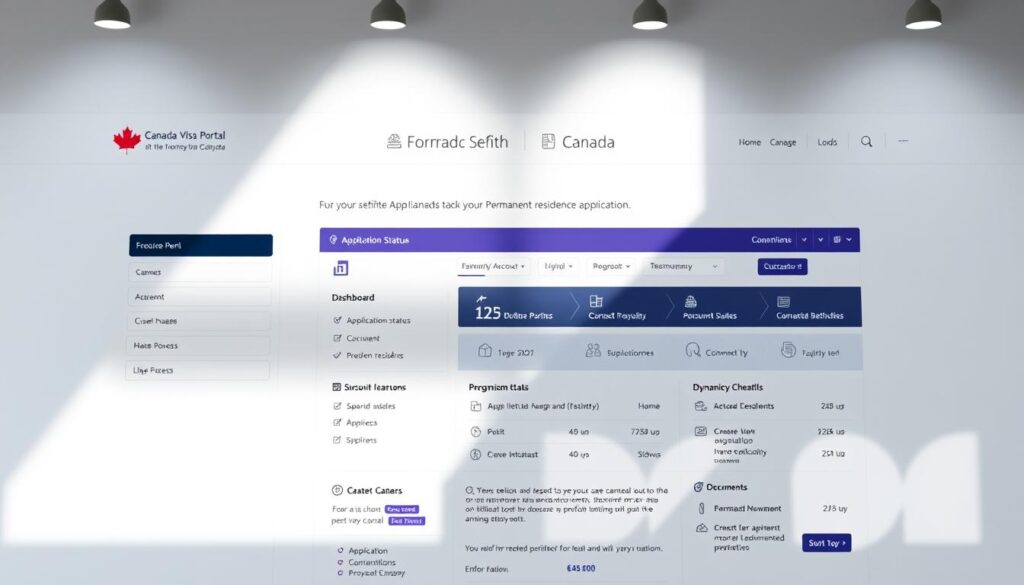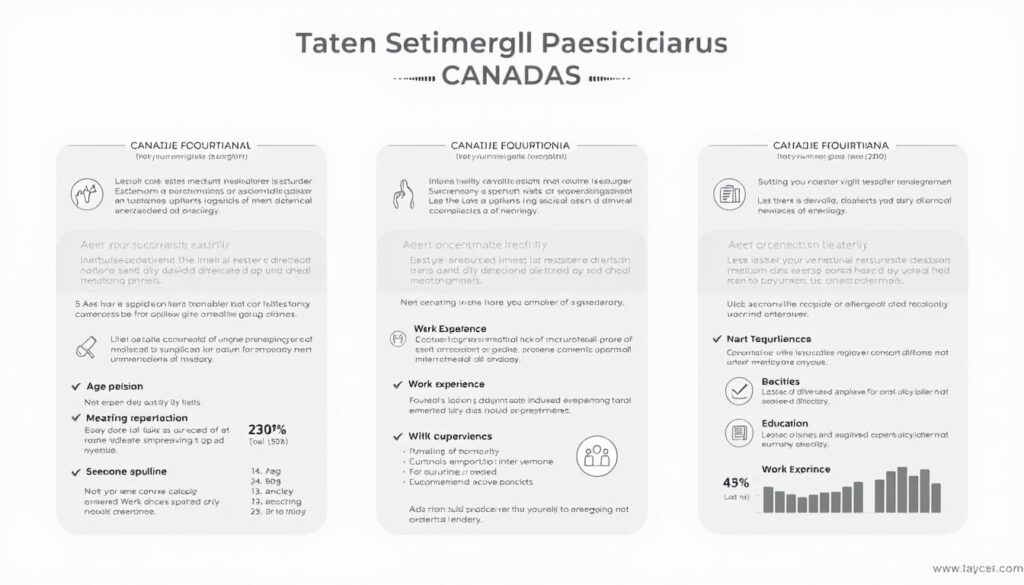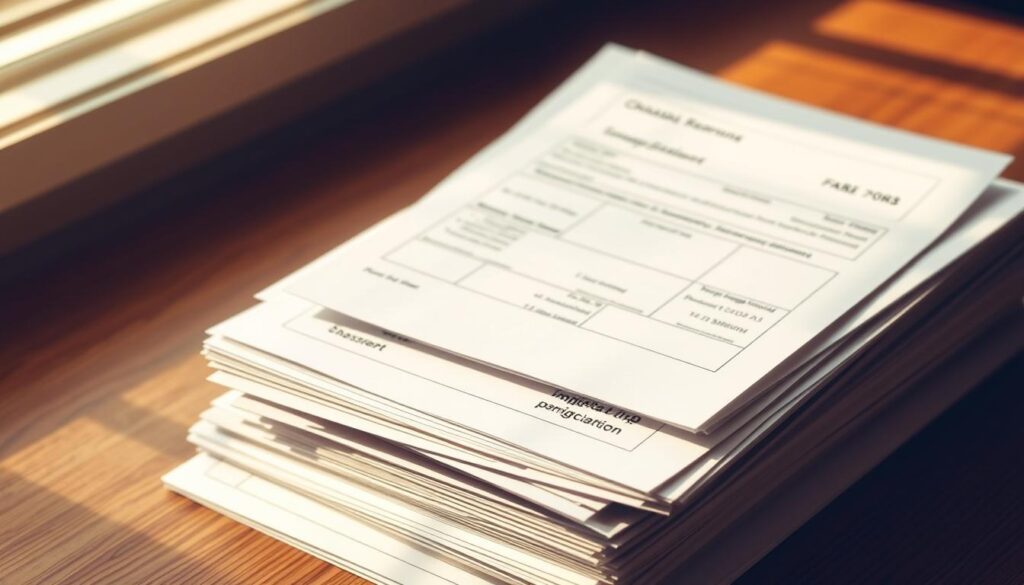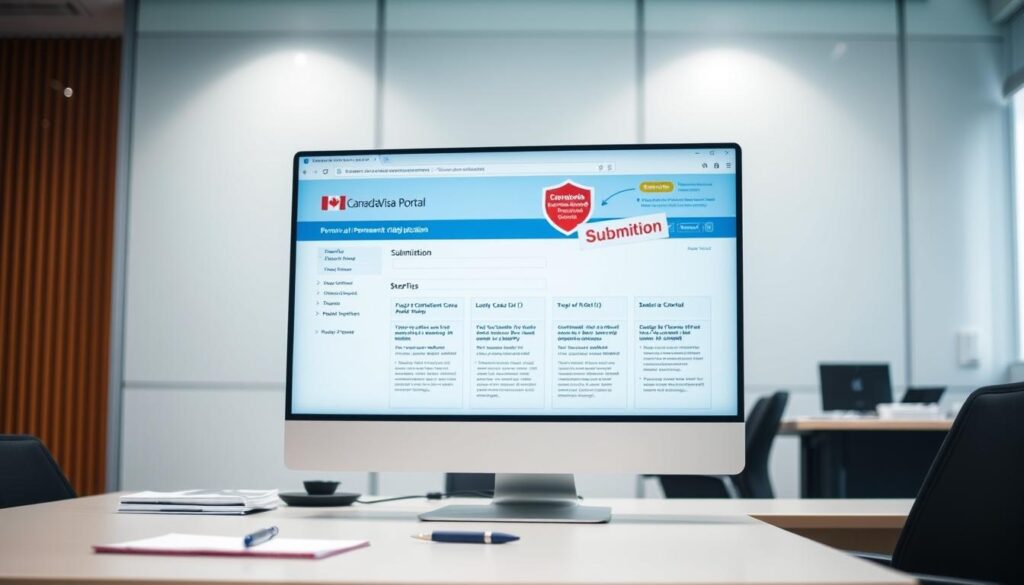Did you know that over 80% of applicants now file for their PR card online? The Canada Visa Portal has transformed the process, making it faster and more efficient than paper submissions. If you’re planning to become a permanent resident, this digital platform is your best option.
The portal offers a streamlined way to submit your documents, pay fees, and track progress in real time. You’ll need the latest IMM forms, like 0008 and 5406, to avoid delays. IRCC updates these regularly, so always check the edition date before filing.
One major advantage? Faster processing. Online submissions reduce backlogs, meaning you could get your resident status sooner. Plus, the system confirms receipt instantly—no more waiting weeks for mail delivery.
Ready to begin? Ensure your address and personal information are accurate. Mistakes can lead to rejections, costing you time and effort. The Canada Visa Portal simplifies every step, so you can focus on your future.
Introduction to the Canada Visa Portal
Canada’s digital immigration system makes submitting your documents easier than ever. The Canada Visa Portal is the official platform by IRCC, designed to streamline your journey to becoming a permanent resident. No more mailing piles of paperwork—everything happens online.

What Is the Canada Visa Portal?
This secure platform lets you manage your submission 24/7 from any device. It automatically checks your form for errors, like missing details in personal history sections. You can also store passports, police certificates, and address proofs safely.
Benefits of Submitting Online
Instant confirmation replaces weeks of waiting for postal delivery. The portal’s validation tools reduce mistakes, ensuring faster processing. Plus, updates from IRCC appear directly in your account.
Need to confirm your status as a permanent resident? The portal keeps your card details handy. It’s a one-stop service for all your immigration needs.
Eligibility for Permanent Residence in Canada
Canada offers multiple pathways to secure your resident status, each with unique requirements. Whether you’re applying through family ties, work experience, or humanitarian grounds, understanding the criteria ensures a smoother process.

Who Can Apply for Permanent Resident Status?
IRCC divides eligibility into three main streams:
- Economic Class: Skilled workers, entrepreneurs, or provincial nominees.
- Family Sponsorship: Spouses, common-law partners, or dependent children.
- Refugees and Protected Persons: Those fleeing persecution or conflict.
Common Eligibility Criteria
All streams require proof of identity, medical exams, and police certificates. Dependents must be under 22, unless disabled. Gaps in your residence history can delay approval.
| Stream | Key Requirements | Special Notes |
|---|---|---|
| Economic Class | Job offer, language test, education proof | Express Entry points vary |
| Family Sponsorship | Sponsor’s financial stability | Adopted children need legal paperwork |
| Refugees | UN referral or private sponsorship | Case-by-case assessment |
Note: Omitting family members in your application can lead to refusal. Double-check all forms to avoid errors.
Preparing Your Permanent Residence Application Form
Accuracy in your submission can make or break your immigration journey. Using the correct versions of forms and following guidelines ensures IRCC processes your file without delays.
Required Forms for Submission
IRCC mandates specific documents, each serving a unique purpose:
- IMM 0008 (Generic Application): Core details like personal history and travel.
- IMM 5406 (Additional Family Info): Lists dependents and relatives.
- Schedule 14: For humanitarian or refugee claims.
Always verify the edition date (e.g., 2025-03) at the bottom of each page. Outdated versions cause rejections.
How to Fill Out the Forms Correctly
Follow these steps to avoid errors:
- Use Adobe Acrobat Reader for PDFs—other editors may distort fields.
- Never leave a box blank. Write “N/A” if a question doesn’t apply.
- For military service (IMM 5546), provide exact dates and ranks.
Tip: Print and review your forms before uploading. Missing details often trigger requests for more info.
Gathering Supporting Documents
Missing even one key document can delay your approval by months. IRCC requires precise details to verify your eligibility, so thorough preparation is crucial.

Essential Documents for Your PR Submission
Your checklist should include:
- Identity proofs: Valid passports, birth certificates, or adoption papers.
- Relationship verification: Marriage licenses, divorce decrees, or custody agreements.
- Employment history: Reference letters, pay stubs, or tax filings.
Non-English/French documents need certified translations. Scan each page at 300 DPI in PDF/A format to avoid rejections.
Tips for Organizing Your Documents
Use IRCC’s checklist (IMM 5286 for protected persons) as a guide. For digital files:
- Label clearly: “LastName_DocumentType_Date.pdf”.
- Group by category (e.g., “Financial_Proofs”).
- Keep backups in cloud storage.
Pro tip: Color-code physical copies with tabs for quick access during interviews.
Paying the Filing Fees
Understanding the fee structure helps avoid delays in your immigration journey. The Canada Visa Portal requires precise payments to process your submission. Missing a fee or paying incorrectly can add weeks to your timeline.

Understanding the Fee Schedule
Current fees are split into categories:
- Principal applicant: $1,365
- Spouse or partner: $1,365
- Dependent children: $230 each
Pay processing fees first. The Right of Permanent Residence Fee ($515) can be paid later, but doing both upfront speeds up approval.
Accepted Payment Methods
You can pay by credit card (Visa, Mastercard) or debit card linked to a Canadian bank. The portal doesn’t accept prepaid cards or e-transfers.
*Tip*: Save your transaction ID—IRCC may request it if issues arise. For declined payments, wait 24 hours before retrying to avoid duplicate charges.
Humanitarian cases may qualify for fee waivers. Contact IRCC directly to order special arrangements.
Submitting Your Application via the Canada Visa Portal
The final step in your journey begins with a smooth digital submission. The Canada Visa Portal simplifies the process, but attention to detail ensures your documents are processed swiftly.

Step-by-Step Submission Process
Follow these steps to submit correctly:
- Log in to your account and select “Submit new application.”
- Upload each required form individually. Check the edition date to avoid rejections.
- Fill every box—use “N/A” for non-applicable sections.
- Validate files before uploading. Ensure scans are clear and under 4MB.
- Pay fees securely and download the confirmation receipt.
*Tip:* Bookmark the portal page to track progress instantly.
How to Avoid Common Submission Errors
IRCC may reject incomplete submissions. Use this table to troubleshoot issues:
| Error | Solution |
|---|---|
| Missing signatures | Digitally sign all forms using Adobe Acrobat. |
| Wrong file format | Convert images to PDF/A and name files clearly. |
| Outdated form edition | Download the latest version from IRCC’s website. |
After submitting, watch for a confirmation email within 24 hours. If alerts appear, address them promptly to avoid delays.
Tracking Your Application Status
Tracking your immigration progress is crucial for peace of mind. The Canada Visa Portal provides tools to monitor your case in real time, helping you stay informed every step of the way.
Using the Online Portal to Monitor Progress
Your GCKey account displays three key status updates:
- Received: IRCC has your file but hasn’t started review.
- In Process: Officers are verifying your details.
- Decision Made: A final ruling is pending notification.
Processing times vary by category:
Economic Class: 12–18 months
Family Sponsorship: 18–24 months
Refugees: Case-by-case basis
What to Do If There Are Delays
If your timeline exceeds IRCC’s posted estimates by 20%, submit a web form inquiry. For deeper insights, order GCMS notes—these reveal officer notes on background checks or missing documents.
Tip: Avoid frequent follow-ups. One well-timed request keeps your case moving smoothly.
After Submission: Next Steps
Once your submission is complete, the real waiting game begins—but with the right preparation, you can stay ahead. IRCC’s process involves several follow-up steps, from acknowledgments to potential requests. Here’s what to expect and how to respond efficiently.
Receiving Acknowledgment of Receipt (AOR)
Your AOR is IRCC’s confirmation that your file is in the system. For online submissions, this email arrives within 30–45 days. Check your spam folder if you don’t see it. The AOR includes:
- A unique application number for tracking.
- Next steps, like biometrics or medical requests.
Tip: Save the AOR—you’ll need it for future inquiries.
Preparing for Additional Requests from IRCC
IRCC may ask for more documents or actions. Common requests include:
- Biometrics: Complete within 30 days of the request. Book appointments early at designated centers.
- Address changes: Update via IRCC’s web form within 14 days of moving.
- Interviews: Local visa offices may schedule these. Bring original documents and translations.
Medical exams are valid for 12 months. If yours expires during processing, IRCC may request a new one. Stay proactive to avoid delays.
Common Reasons for Application Rejection
IRCC rejects thousands of cases annually for avoidable reasons. Small errors—like missing signatures or incorrect fees—can delay your journey by months. Knowing these pitfalls helps you submit confidently.
Top Causes for Returned Files
These issues trigger immediate rejections:
- Outdated forms: Always check the edition date bottom of each page. IRCC updates versions frequently.
- Unsigned documents: Digital signatures in Adobe Acrobat are mandatory for online submissions.
- Fee miscalculations: Underpaying by even $1 may reject your form. Use IRCC’s fee calculator.
How to Fix Critical Errors
Gaps in personal history or address details raise red flags. Follow these instructions:
- For PCCs, ensure validity within 6 months of submission. Expired certificates may reject form.
- Sponsors must prove income meets Low-Income Cut-Off (LICO) thresholds. Upload recent tax notices.
- Fill every box—even with “N/A”—to avoid incomplete flags.
| Error | Solution |
|---|---|
| Misrepresented travel history | Submit passport stamps or entry records. |
| Missing dependents | Add all family members in IMM 5406. |
| Expired medical exams | Redo tests if IRCC requests. |
If rejected, you can appeal through the Immigration Appeal Division. Gather new evidence and file within 30 days. A lawful permanent resident sponsor’s ineligibility may also be contested here.
Tips for a Smooth Application Process
A well-prepared submission can significantly reduce stress and uncertainty during the immigration process. Small oversights may lead to delays or rejections, so thoroughness is key. Follow these strategies to streamline your experience.
Double-Checking Your Submission
IRCC rejects files for minor errors. Use this 10-point checklist before submitting:
- Forms: Confirm edition dates match IRCC’s website.
- Signatures: Digitally sign all pages in Adobe Acrobat.
- Details: Cross-check personal history for gaps.
For family-related updates (e.g., marriage or birth), submit notarized copies of certificates. Label files clearly, like “Smith_MarriageCert_2025.pdf”.
When to Seek Legal Advice
Complex cases often require expert help. Consult an RCIC-certified consultant if:
- Your work history has gaps exceeding 6 months.
- You’re sponsoring a non-biological child.
- Previous entries to Canada were refused.
| Situation | Recommended Action |
|---|---|
| Missing police certificates | Obtain new ones; expired copies are invalid. |
| Changes in family composition | Update IMM 5406 and notify IRCC via web form. |
| Statutory declarations | Get them notarized and translated if needed. |
Pro tip: IRCC’s document checklist (IMM 5286) is updated annually. Download the latest version to avoid outdated instructions.
Conclusion
Securing your future in Canada starts with a smooth digital process. The Canada Visa Portal cuts paperwork and speeds up approvals. Track progress, upload documents, and get instant confirmations—all in one place.
While waiting for a decision, ensure your temporary status remains valid. Renew visas or permits if needed to avoid gaps.
Once approved, apply for your PR card and update vital records like health cards and SIN. Use IRCC’s mailing tracker to monitor delivery.
Ready to begin? The portal simplifies your immigration journey. Take the next step toward becoming a resident today.



